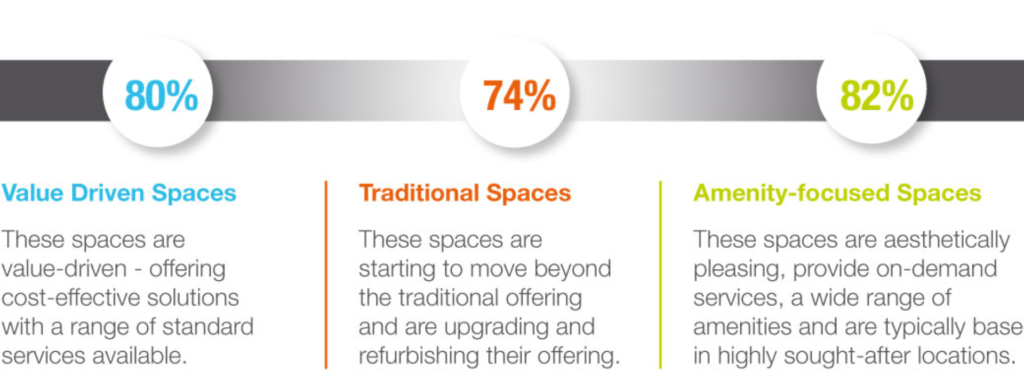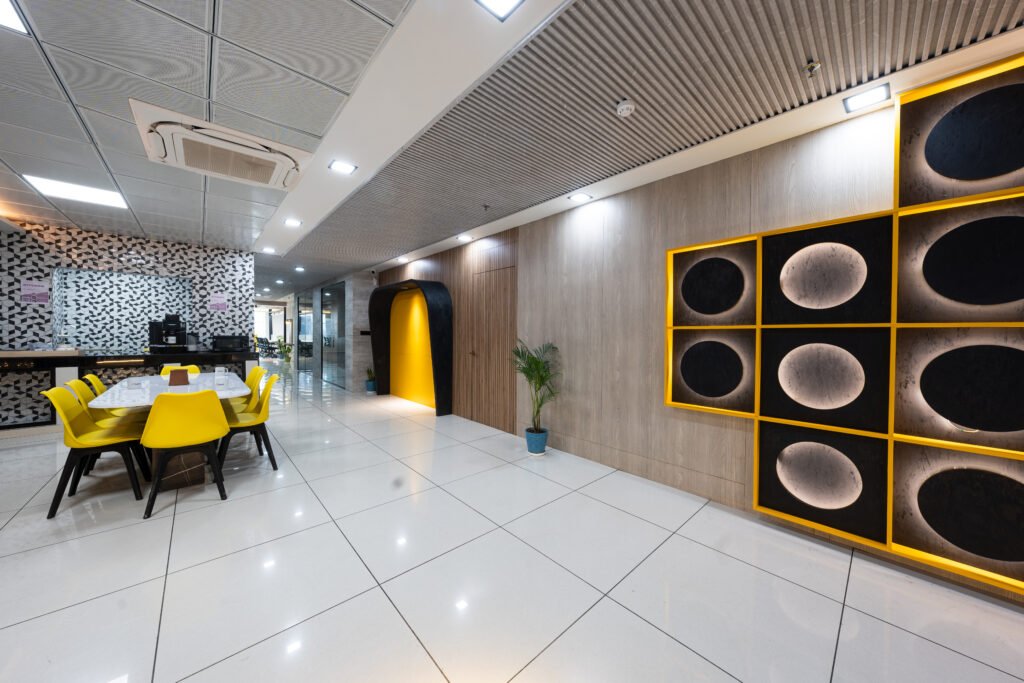Coworking spaces in Noida and other growing cities are a lot more in demand than ever. But as the demand continues to grow, office space providers also need to make sure that their offices are performing efficiently. But how does one check? There are occupancy metrics that help understand these metrics and gain insights into how well their space is being utilized and are there any scope for improvements. Read ahead to learn more about them:
What are Occupancy Metrics?
Occupancy metrics provide insights into the occupancy rate. Operators can know how much their office space is being utilized and what is the peak time. They can assess how efficiently the coworking is used and whether it’s meeting its financial goals or not.
Here are the most common occupancy metrics:
- Occupancy Rate: The number of available desks that are used over a particular time.
- Utilization Rate: The frequency of booking meeting rooms, desks or private offices.
- Average Desk Occupancy: The average number of hours a desk is occupied in the whole day.
- Peak Occupancy Time: The times of day or week when the workspace is used the most.
- Space-to-Revenue Ratio: How much income does each square foot of the office generate?
Why Occupancy Metrics Matter for Coworking Spaces
Coworking in Noida and everywhere else work on flexibility but somehow, they lose their structure and that’s why occupancy metrics are crucial.
- Improving Space Utilization: Tracking is the most useful to understand how your space is being used. Certain areas might be underutilized while the demand for some is constant. By proper analysis, it’s possible to adjust layouts or repurpose underused spaces so people choose them as well.
- Resource Allocation: By identifying peak usage times and areas in your coworking space in Noida, you can make sure they are maintained in low occupancy time and staff can be deployed more during busier hours to assist the members.
- Maximizing Revenue: If you know how many desks or offices are busy at any given time, you can work better on the pricing. Prices can be set high for peak hours. There can also be discounts or special offers to attract more members and increase income.
- Enhancing Member Experience: A well-managed coworking space offers a good experience to the members. Occupancy metrics show how members interact with your space. If certain desks or spaces are booked all the time, maybe you can add more of them to meet the demand and have the utmost user satisfaction. This balances the overcrowded and underused areas.
- Forecasting Demand: By observing correctly, you can also predict future trends in demand. If you sense an increase in bookings over time, you might consider adjusting the layout, expanding the space or adding more services. And if the occupancy seems to go down, you can strategize accordingly.
How to Use Occupancy Metrics to Evaluate Performance
Coworking spaces like Let’s Connect Noida analyze their workspace efficiency by:
- Track Occupancy Rate Over Time: By tracking the occupancy rate, you can understand the long-term trends in your workspace. You might notice that occupancy is high on some days and low on others and hence, you can create special promotions for those days.
- Check Desk Utilization: If you offer hot desks, it’s good to know how often they are being used for maximum efficiency. If they are mostly unoccupied, there could be a problem with the location and if they are high in demand, you may add a few more to manage demand.
- Analyze Meeting Room Usage: Meeting rooms are often booked in coworking in Noida and it’s important to learn how often they are used. If there’s non-stop booking, it indicates that it’s time to create another meeting room and if they are mostly empty, you can run discounts on them or attach loyalty points to their free usage.
- Assess Peak Occupancy Times: Identify the high-traffic periods. If your workspace has most footfall in the morning and evening but afternoons are quite empty, you can change the rates for those hours. Keep the lighting, cleaning and ventilation at best for the in-demand hours.
- Space-to-Revenue Examination: It measures how income is generated by each square foot of space. If the open desks are generally empty, you can re-arrange the layout and maybe add a cabin instead. This ratio allows you to put your floor plan to best use and ensure that every square foot is making money.
Best Ways to Collect and Interpret Occupancy Data
Below are some of the best practices:
- Leverage Technology: Use software to track occupancy in real-time and get detailed reports and insights.
- Set Clear Goals: Be sure of whether you want to increase revenue, maximize space utilization or anything else.
- Combine Metrics: Combine occupancy data with other key performance indicators (KPIs) like membership growth for a complete performance review.
- Regularly Review and Adjust: Occupancy patterns change over time so keep reviewing to notice any patterns.
Conclusion
Occupancy metrics evaluate the performance of a coworking space by showing how the space is being used so you can decide how to attract more members and increase the total revenue. Coworking spaces like Let’s Connect Noida always track and analyze these metrics regularly so their workspaces remain competitive and thriving.



